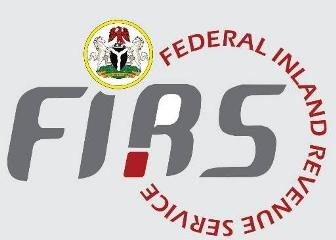Opinion
Food Security: A Hoax?
Nigeria, a country of about 150 million people, finds it difficult to feed itself, not to talk of meeting the raw materials needs of its local industries. By the way, we should be talking of exporting our agricultural products either as raw, semi-processed or processed products.
Nigeria, as Africa’s most populous nation with a clement weather, very fertile land and large expanse of arable land, has no business importing food, especially rice, wheat, sugar, fish or beef.
The modern world views hunger and poverty as a sign of under-development and the inability of a nation to provide adequate food for its citizenry. That is the more reason why the country’s policy makers right from the point of formulation to implementation of agricultural programmes for food security, should involve the major stakeholders, including the people and take practical steps to realise set objectives of self-sufficiency in food.
Previous governments, especially at the federal level, have only paid lip service to food security programmes and issues as it affects the nation.
The Umaru Musa Yar’Adua administration enunciated the seven-point Agenda, and among the agenda, was food security. Also, his predecessor, Olusegun Obasanjo had his food security programme with the ambitious plan of providing adequate food for the Nigeiran populace. To some extent, he tried in the “grow cassava project” as Nigerians embraced it and our production of cassava for some time was one of the largest in the world. Then, of course, credit must be given to that government for helping to revive cocoa production and export. But it should have done more on major staples and other areas.
Food security means self-sufficiency in food production and entails growing enough food to feed the entire citizens and cocoa industries as well as for export to other countries. To achieve this, government needs to take a more holistic and pragmatic approach to issues of food security. Such steps must include increased production of most of our agricultural produce, particularly based on comparative advantage.
Since some agricultural produce do better in certain parts of the country than others, the various research institutes and space technology centres can go a long way in driving this vision.
Nigeria can produce cassava, rice, yam, cocoa, groundnut, sesame, soya bean, oil palm, cotton, wheat, maize and other cereals including potatoes.
The country can also produce other things to enhance our beef and poultry etc. Indeed, the country has all it takes to produce these agricultural products in large quantity for both domestic consumption and industrial uses as well as for export to garner foreign exchange for the country.
For instance, cassava can do very well in most parts of the country while rice does very well in the Eastern, North central as well as Southern parts of the country. And for cocoa, the Western states grow it most while some Southern states grow it well too. Cotton and groundnuts thrive very well in the North alongside most cereals. Same could be said of oil palm which thrives most in the East. Also yams, sesame and soyabeans do very well in the North central and the ‘food basket region’ of the country.
All these agricultural products, if properly harnessed with each area of the country concentrating on its ‘product’ of advantage, would go a long way in boosting Nigeria’s food security. This country requires at least, two fertiliser plants in each geopolitical zone to be able to attain food self-sufficiency, especially taking our population into cognisance.
It is pertinent to note that good storage and post-harvest handling of products is very important to stem wastages and maximise harvests/profits for farmers. Also, there is need to increase capacity for the local processing of these products.
It is a known fact that semi-processed or processed agricultural products are of more value in the international market than when it is unprocessed.
Mechanical farming must be embraced and our crude farming methods jettisoned, if we must attain food security. Indeed, with machines you can farm a large expanse of land than, what humans can do. Also, the Land Use Act and the land tenure system need to be reformed for improved and better use of the vast arable land.
In addition, there is need for the construction of dams in rivers for irrigation purposes, especially in the North, to ensure all-season farming. It could also be used for fresh water fishery purposes.
In a related development, cattle and dairy farming should be encouraged and keyed into, as a cardinal part of food security, since our protein needs form a major part of our lives, either in form of beef, milk, fats and oil or cheese. Dairy and cattle farming could generate a lot of foreign exchange for this country and help improve the standard of living.
Consequently, fish farming, which is still at a relatively subsistence level in the country, needs to be improved upon and expanded beyond the scope it is now practised.
In most of the South-South states of the nation, people use canoes, fishing nets and baskets when the world has gone ‘computer,’ using travlers and other modern fishing gadgets or gears. The government could buy these equipment through the fisheries agency and hire them out to fishermen at reduced rates through co-operative societies. Also, fish pond farms should be encouraged and established for the populace.
Finally, food security or self-sufficiency in food production could only be realised if our youths are encouraged and engaged in agriculture by making it attractive and providing incentives. We know the youths constitute a large segment of our population and therefore, could be gainfully engaged in the Fadama I and Fadama II projects as well as in fish farms and cattle/dairy farms. A strategy should be worked out to properly remunerate them, possibly through Public Private Partnership (PPP). Addressing these aforementioned factors would go a long way in guaranteeing food security in Nigeria.
Ayooso, a public affairs analyst, resides in Port Harcourt.
Samson Ayooso
Opinion
The Girl Who Didn’t Dance
Opinion
Tradition or idolatry? The Debate Over Nhe-Ajoku

Opinion
Fubara’s Strategic Masterstroke

-

 Politics5 days ago
Politics5 days agoAhead Kefa’s Defection, 16 Taraba PDP Lawmakers Join APC
-
News4 days ago
UNICEF Condemns Kebbi Students’ Abduction, Urges Stronger Security
-

 Business5 days ago
Business5 days agoWe Can No Longer Depend On Volatile Oil Revenues Or Foreign Loans – FIRS
-

 News2 days ago
News2 days agoMAN Tasks Rivers, Bayelsa On Blue Economy
-

 News5 days ago
News5 days agoJAMB Conducts CBT Promotion Exams For 6,000 Directors
-
Sports5 days ago
Hoopers Ready For NPBL Title Defence – Captain
-
Politics5 days ago
Eno Sacks Aides Who Attended PDP Convention
-
News4 days ago
Rivers Community Marks Annual Wrestling Festival

